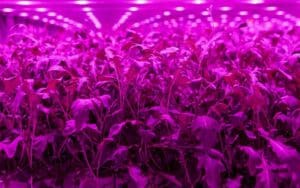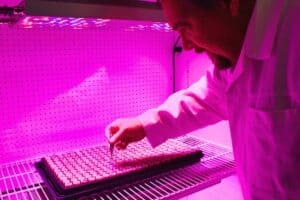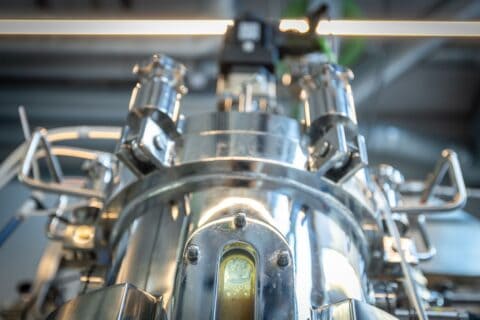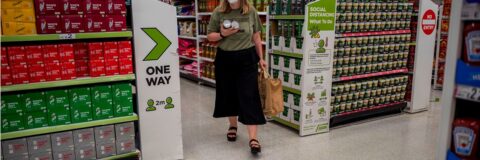Using tech to grow crops is nothing new, but Controlled Environment Agriculture (CEA) is shaking up our global food systems. Farmers are reaping a host of benefits from CEA methods such as vertical farming, but just how sustainable is it? In this SustMeme Guest Post, Simon Deacon, CEO of AgTech specialist Light Science Technologies, looks at the top five environmental benefits.

SD: Recent statistics declared that the UK imports a whopping 45% of its food — not exactly sustainable, even before you factor in Brexit. The rest of our food is mainly produced in rural areas such as Devon, and often transported to several different destinations before it finally reaches a dinner table. So, the first environmental benefit of Controlled Environment Agriculture (CEA) concerns food miles.
- Lower food mileage
According to Defra, transporting food produces 19 million tonnes of CO2 annually. To put that in context, that’s the same amount that’s produced by 5.5 million cars. And that’s just for the UK.
At the moment, vertical farms often supply local shops. On average, there are just 43 food miles between a vertical farm and the consumer. The average for open field farms is 2,000 food miles. Furthermore, vertical farms don’t need diesel-guzzling tractors, plus, by reducing the number of workers needed, they reduce transport emissions even further.
- Less land required
Vertical farms have a far smaller footprint than traditional farms as they can easily grow 50 times the amount per square metre of land mass. We have a finite amount of land. Millions of hectares of rainforest are destroyed every year to make way for new plantations. And due to a growing global population, farmers will need to produce 70% more food by 2050 compared to 2010. With traditional farming, this could require an extra 593 million hectares of agricultural land. That’s around twice the size of India.
Here in the UK, land is at a premium. As our own population increases, we will need more land for houses, schools, shops and other buildings. It’s crucial, therefore, that the land we use to grow our food is fully maximised.
- Reduction in pesticides and other chemicals
No pests mean no pesticides. In CEA, there’s no need to tackle powdery mildew, rust, blight or other issues with chemicals. So the crops are, by nature, grown organically.
- Decreased food waste
According to the United Nations, around one third of all food is wasted. Some of that waste occurs before the food even reaches a shop, due to issues around harvesting or transportation. With CEA, harvesting can be automated, leading to less waste. There’s also little to no waste from crops spoiling in the fields due to pests, diseases, droughts, floods and temperature extremes.
Plus, if the produce is destined to be eaten within the country in which it’s been produced, there’s less chance of it spoiling during transportation. Ocado is even aiming to build vertical farms next to some of its stores, so that produce can be on the shelves within an hour of being picked.
- More water efficient
All crops need water. Crops grown using CEA need up to 95% less water than traditional crops because none is wasted. Some vertical farms are now looking into using rainwater, but the majority will require mains water. Again, smart solutions can ensure that the crops only get as much water as they need.
But what about lighting?

While it’s certainly true that vertical farms need LED lights in order to grow crops, these lights are becoming increasingly efficient. There is a higher electricity demand to vertical farming, but that certainly doesn’t negate the other environmental benefits. To ensure a farm is as environmentally friendly as possible, it can run on green electricity.
What is better is that it could generate some of that power itself, saving both CO2 emissions and running costs.

Simon Deacon is founder and CEO of Light Science Technologies Holdings, which brings together market-leading controlled environment agriculture technology — Light Science Technologies — and quality-led UK-based electronic manufacturing to help customers grow more with less. Light Science Technologies delivers lighting, science and research-proven plant monitoring technology and software in partnership with world-leading university research teams. Offering an integrated technology solution for Controlled Environment Agriculture (CEA), the company works across multiple indoor applications including vertical farming, greenhouses and medicinal plants. Its real-time monitoring and control links technicians, farmers, and facility managers with their crops, to provide instant production-enhancement data for next-generation scalable farming.
You can check out the full archive of past Guest Blog posts here.
Would you like to Guest Blog for SustMeme? For more info, click here.
SUSTMEME: Get the Susty Story Straight!





